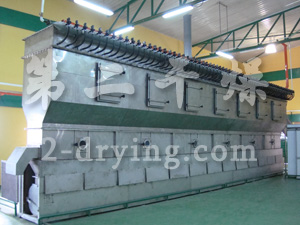I. breadcrumb project overview:
The edible part of bread crumbs is 100%. Put the leftover bread in the microwave oven to dry completely, and there is slight scorching yellow. Then spread them in the plastic belt and crush them with a rolling pin. The bread crumbs are made. Breadcrumbs are ready to eat and ready to cook. If you can't eat them all at once, you can refrigerate them in a fresh-keeping bag. It should be noted that before storage, you must make sure that the breadcrumbs have dried completely, so that the breadcrumbs can be refrigerated for six months in the refrigerator.
II. Overview of the special boiling dryer for bread crumbs:
It is composed of air filter, fluidized bed main engine, cyclone separator, bag filter, high-pressure centrifugal fan and operation platform. Due to different properties of dry materials, when supporting dust removal equipment, it can be considered as required, and cyclone separator, bag type dust remover or one of them can be selected at the same time. Generally speaking, only the cyclone separator is needed for drying the powder and particle materials with large proportion. Small granular and powdery materials with light specific gravity need to be equipped with bag type dust remover, and equipped with pneumatic feeding device and belt conveyor for selection.
The granular solid materials are added into the fluidized bed dryer by the feeder. After the filtered clean air is heated, it is sent to the bottom of the fluidized bed by the blower and contacted with the solid materials through the distribution plate, forming a fluidized state to achieve the heat and mass exchange of gas and solid. After drying, the material is discharged from the discharge port, and the waste gas is discharged from the top of the boiling bed, and then the solid powder is recovered by the cyclone dust collector group and the bag dust collector, and then discharged.
Steam, electricity and hot air stoves can be matched (matching according to the user's requirements).
It is suitable for the drying of granular materials, such as APIs, tablet pressing granules, traditional Chinese medicine granules, plastic resins in chemical raw materials, citric acid and other powdery and granular materials, as well as the drying of food and beverage granules, grain processing, corn germ, feed, etc. The particle size of the material can be up to 6 mm, preferably 0.5-3 mm.
III. project cases:

